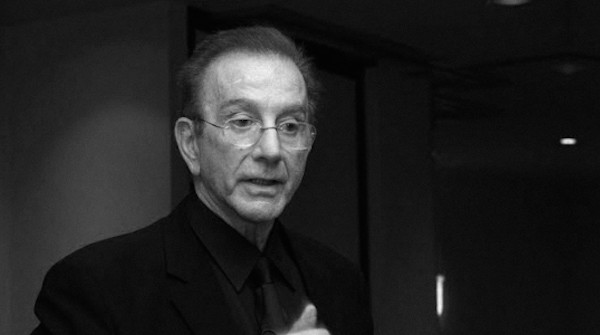
Today, I’m with Ted Nicholas, who I first had the opportunity to see speak back in 2006 at a Underground Online Seminar Yanik Silver held in London. It was an amazing experience. Ted was one of the oldest people in the room and acted like one of the youngest and he sure had a wealth of information to share! Although this interview is the longest yet at 55 minutes, I encourage you to take the time to listen to it / read the transcript. I have already picked up so many great ideas from Ted that my business will change for ever!
At the point of conducting this interview Ted has earned himself and his clients in excess of 7 billion dollars but it wouldn’t surprise me if by the time you see this interview, its a lot more! If you want to find out more about Ted and his products generally, you can visit his site: http://www.tednicholas.com
To Listen To This Copywriting Secrets Podcast – Click Here
Copywriting Secrets That Have Sold Billions – An Interview with Ted Nicholas
Interview Transcript:
Michael Dunlop I understand you got into your first business at just 21 years of age and nearly 100 grand in debt. Your first business was a fudge shop, and I love the story of how your shop became a success. Can you share with us some of this story and what you learned from your first business?
Ted Nicholas: Oh, I’d be happy to. Well first of all, I always wanted to be in my own business, as I’m sure a lot people listening to this interview have in their hearts. The heart of an entrepreneur has to be there for a quite awhile before it actually takes root, I would think.
That was certainly the case with me. I always wanted to be in my own business. I grew up in a small family business. I learned how, among other things, to make candy, because in my father’s restaurant, he also had a candy and ice cream shop. I was always intrigued with the process of confectionery manufacturing and ice cream manufacturing. So, I started my own business.
But I had just one obstacle that most entrepreneurs have. I didn’t have any money. Basically, I had $800 in savings. In order to start the business, I needed about $100,000.00 So, I basically put together a plan to develop $100,000.00 without starting from scratch.
Basically what I did was convince a real estate owner of property that I could buy his property for no money down. And I remember my payment was $308.74 a month on a 20-year mortgage. So, I bought the property. And I bought equipment on the basis that I would like to buy this equipment from confectionery manufacturers, and if I’m successful, I’ll pay for it. If I’m not, I’ll return the used equipment. Well, you can imagine what some of the people told me when I made that proposition.
But fortunately, one company by the name of WC Smith in Philadelphia went along with me and put equipment in my place. Then with raw materials, I went through the same sort of thing. By the day that I opened, I was actually $96, 000 in debt, and I thought this is great. I have this shop. It was actually a “see candy made” sort of a fudge shop called Peterson’s House of Fudge. But I had one problem, no customers and no money for promotion to gain customers.
But I had one problem, no customers and no money for promotion to gain customers.
So, I didn’t know exactly what to do. But I was reading the paper one morning, and I saw that there was a young woman who won a national skating – it happened to be roller skating – and she was training in a rink about a mile or so away from my shop. So I went to see her.
I thought there are just a couple of things that turn people on… See, I had this roadside location where 25, 000 cars passed my property every day. The only problem was nobody was stopping, and three people had previously gone bankrupt in the location where I was. So, it wasn’t exactly a hot property.
But I wanted to figure out a way to get people stop, and I thought there are two things that turn people on: women and cars. Because, most of the drivers driving by were male drivers. A lot of times male drivers are more turned on by cars than they are by women, but I thought a certain percentage would be excited if I had an attractive woman outside my shop stirring a kettle of fudge.
So, I convinced this young woman that she’d start working for me that following Saturday. I’d build a platform. We’d put a copper kettle outside. And she would stand there in a rather brief outfit with a big chef’s cap, stirring this big kettle of fudge. And when she did that, we had an absolute traffic jam, because the people wanted to know what the heck’s going on this attractive woman stirring this fudge.
A local newspaper came out and did an article on my business. I told the newspaper reporter that I wanted to create a whole chain of stores eventually; that was my dream. The guy thought that was pretty funny, because there I was without any money, with my first shop, with this girl stirring the fudge.
But one thing lead to another, and the business became enormously successful. Several things so happened that affected the rest of my career. Because I noticed that when I changed the sign – I had some signs like 15 miles away from my shop, 14 miles away, 12 miles away, and they would say basically: “Go to Peterson’s House of Fudge”. And when I changed a few words on the sign more or less people stopped, depending on what I had on the sign.
I thought that was fascinating, and then I put certain words like “free samples” on the sign. I put on “see candy made” and certain key words like “perfect Sunday ride destination for the family.” When I put on these words on the sign, my business just started to thrive more and more and more. So, I became intrigued with the power of words. I thought gee, words. I could just put words on signs, and I’d get people to stop at my shop. What a marvelous thing.
And then a second thing happened. I created a catalog for all my candy products. I had 77 flavors of fudge plus about 100 other products that I was marketing, selling and manufacturing there. I would put this catalog inside the shopping bag when people bought whatever they bought. Or even if they bought ice cream, I’d put in this catalog. And I got a large response from the catalog. People would go home and they would start ordering my confectionery products.
Well a couple of months later, I created a new catalog. Same products, different copy, and I noticed that I had different results on each one of the products that I’d described. So I thought: Why don’t people talk about this? Because if you change the words, you’re going to change the response
Because if you change the words, you’re going to change the response.
I talked with other business people that I knew, restaurateurs and the like, and their eyes would glaze over. They didn’t seem interested at all in the idea of the power of words. I thought these people are missing the boat, because with the proper words, you can really create business.
because with the proper words, you can really create business.
So, another very instrumental thing to me at that time was I would write letters to the editor. And when I got my letters in newspapers and magazines – local papers, national papers, national magazines – when I got my letters and articles that I had written published, I thought this is just so great. If I could ever figure out a way how to make a living writing words, I’m going to do it. It would be such a pleasure for me to do, and I kind of filed that. This was at age 21.
By the time I was 30, 29 actually, I had 30 shops of my own. I was invited to the White House as one of the two outstanding small businessmen in America and invited to meet the president at that time. I’d never even been to the White House as a tourist. It was a great experience.
So, I wrote my first book in my mid-thirties called, “How to Form Your Own Corporation Without a Lawyer for Under $75.” I realized that by the time I was 35, I had set up something like 17 companies of my own. And my lawyer’s secretary was doing the work and sending me invoices for like $1, 500, $2, 000.
I thought the best-kept secret in America, and in the United Kingdom, and in Europe, is that entrepreneurs have no money and they can’t raise any money. I thought if I could make it cheaper, easier, and quicker for people to set up a company, I would be doing a real service for people.
So, I set up this little business. Well basically, I took my book then to nine publishers, they all turned me down. I said, look I have got this idea. I am going to revolutionize incorporating in America. They thought, yeah, sure you are. They all turned me down. Of course their lawyer, the legal departments in all these publishing companies, they didn’t like the idea at all, of having a book with the tear-out forms right in the book, to form a company. So I basically set up my publishing company in the corner of my house, called Enterprise Publishing.
At the same time, I set up an incorporation company called The Company Corporation, which has since become, by the way, the largest incorporating company in the world, which incorporates companies in all fifty of the U.S. states. At the time I set up the company, all the competing registered agents would only deal with other lawyers, where I would deal with entrepreneurs, lawyers, accountants, whoever wanted to use our services.
When I started that company, I wrote my first classified ad and ran it in the Wall Street Journal. It cost me ninety dollars. I ran this ad. I sent out my first sales letter in 1973 and I got back in close to five hundred dollars worth of sales.
I thought, this is fantastic. Ninety dollar ad, five hundred dollars worth of sales, I will just run that ad in every newspaper and magazine that I can in America and in Europe as well, and I will make a fortune. Besides that, the people are sending me cash with their orders.
In many cases they would send a twenty dollar bill with cash to buy the book, and I am just going to create a great business. Within six months the postman was bringing bags full of orders to my door. Remember I was still operating out of my house, in this little suburban house that I lived in at the time.
I was getting in, at that time, I was spending about fifty thousand U.S. dollars a month on ads. Mind you, I started with ninety dollars. I am now spending, six months later, fifty thousand dollars in ads, but I was getting back in two hundred thousand dollars in orders.
Well, this business just started growing and growing and growing, and pretty soon I had people sending me their books and manuscripts in order to publish their books and manuscripts. They figured, I must be the worlds largest publisher because I am running, by that time, I was running full-page ads, whereas my competitive publishers never ran an ad in their lives.
Most publishers are good at distributing books but they are very bad at marketing books. So I devoted all my energy on marketing the book, because you can easily get people to print the book, the problem is marketing the book and selling the book, as it is with virtually any product.
Your problem is not creating the product. The problem is always marketing the product. That is what I devoted my time since 1973 until now, in how to market my products and products of my hundreds – I have got hundreds of people who are my mentoring clients, on how they can market their products.
If you have got an Internet business, or for that matter, a non-Internet business, a business that does business offline, or if you have a retail shop, your problem is not opening the shop, your problem is not manufacturing the goods, you can always get people to do that.
The problem is getting people into your shop and getting people to buy your products, and that is what I became focused on, and a specialist in. That is what I have been doing ever since. That is kind of a longer answer then you were looking for, but a kind of a complete answer as to how I began in the business.
Michael Dunlop: That was an incredible answer and exactly what I wanted to hear. Anyone listening to this can apply something of what you said to their business. That was great. So right now, and in your past, you have been a successful international speaker, an author, marketing consultant, and one of the most successfully, highest paid copywriters in the world. When you started out, who was your mentor and who inspired you?
Ted Nicholas: That is a darn good question. I was looking for mentors because everybody does better when they have a mentor. When I started I didn’t know anybody. There wasn’t anybody that was teaching marketing, teaching copywriting, that I knew about and that I had any respect for. Well perhaps, there were a couple of university professors that I had gone to their seminars. To be very honest, I have nothing against university professors, I love them when they are good.
Professors when they are teaching marketing, when they have never spent a dime on their own on marketing their own products, and they are making statements that are just erroneous. I remember I went to one and he was saying, “Never have a question mark in a headline.”
I am thinking, I have made millions with headlines that have question marks, and this poor audience, is listening to this professor tell them not to have a headline with a question mark in it. So I didn’t know any mentor. The closest I came to mentors is some really great books.
Books have been my friend ever since I started my adult life, really and my marketing career, my business career. So I read books by John Caples, and by Robert Collier, and by David Ogilvy, three names. Russ Arrives, and these people inspired me so much because while the books are written perhaps forty or fifty years prior to my career start, they had more information, more knowledge, then any of the current books at that time that existed on the market. I became very intrigued.
So, my best mentors were really authors of books. In fact, every since then, I think the two best ways to learn in life, of course, I have written 15 best selling books so admittedly I have a bias that is part of my profession. But basically, I think the two best ways to learn are in reading books and traveling. I like to do a lot of both because it is a terrific way of arming yourself. So, that is as close as I came to mentors.
Michael I know you have got some incredible stats throughout your business. Do you want to share with us some of the stats on your achievements, Ted? For example, What have you spent on testing marketing and how much have you made in revenue?
Ted: Oh, well I have spent at least a hundred million dollars on tests, which is probably a conservative figure. The only way I really could learn anything, and the way that I did it, was through a lot of trial and error. This is what I tried to save my readers and entrepreneurs now. Trial and error is a very good way to learn, but it is a slow way and it is an expensive way.
What I do now with clients and with attendees at my seminars, and with readers, is try as much as I can to shortcut the process so they don’t have to spend twenty-five, thirty, thirty-five years learning, because if they did trial and error for twenty-five, or thirty, thirty-five years, they could learn as much, possibly more, then I have learned.
I thought if I could shortcut the process, it would be great. So, I have done a lot of… In fact you could say that out of, I have sold nearly seven billion dollars worth of products and services with my own ads, for my own products and also for clients. And virtually every time I run an ad, I’m also running a test. And so virtually I’m testing and testing all the time, because I’m testing my most frequent…
The thing that I do more frequently is test headlines, because headlines are responsible for arguably about 73% of the success of any ad, be it online or offline. And most copywriters and most entrepreneurs will spend most of their time on the body copy, and almost no time on a headline. And I did the reserve.
For example, if I’m running an ad campaign for a product, I’ll write 250 headlines before I choose. Your headline has to be a killer, and when it is you have a chance that people are going to read your copy. And then each word in the copy has to be very persuasive, very good. So this is the way I look at it.
Michael Can you share with us some of the most successful headlines and explain why they worked?
Ted: Oh, sure. Well, one thing that comes to mind immediately is one of my clients – his name is Bill Fisher – came to me with a failed book. And in fact the title of the book, I re-titled it, is now called, “How to Fight Cancer and Win.” Book titles, by the way, are headlines for books.
The product name – anybody listening to me today, I want you to understand that your product name is crucially important because that’s in effect like a headline for your product. And your book title is crucially important, if you happen to be an author or someone who is marketing booking and information, you’re title is very important.
So he came to me with a book called something like, “The Cancer Encyclopedia.” I read the book and I thought, “This book is fantastic.” It dealt with a cancer approach based a lot on diet, and was a Dr. Joanna Budwig who was nominated for the Nobel Prize seven times.
What a lot of copywriters don’t do, they don’t do their homework. I read the book very carefully before I decided I was going to get involved in marketing the book. I read it very carefully. And on page 117, I think it was, I found what turned out to be my headline because on that page, it’s quoted as how she found the combination of these two natural foods.
I thought, when I read that in the book, I thought, “That’s my headline, ” because then I wrote this headline down on my 3×5 card. I use 3×5 cards as I’m going through the book writing down benefits. The headline that I came up with was, “How to prevent and even cure cancer with these two natural foods.” The sub-headline said something like, “Seven time Nobel prize winning doctor shows.” Why did I have that in the sub-headline? Because I have to build credibility, because you make a statement like that in a headline…
Here’s another thing that I found out, another secret of marketing. A headline not only has to be absolutely true, it has to seem absolutely true, because if you just have a headline that is true but unbelievable, nobody will read the rest of the copy because of what I call a BS detector. All of us read copy. If it sounds false, you don’t continue reading it. And so I had that sub-headline to establish the credibility of this seven-time Nobel doctor, who would not make a statement like that without having a scientific basis for it.
That’s an example of a headline and how I came about getting the headline. Another example is, “The Ultimate Tax Shelter” and this is from my book “How to Form your Own Corporation Without a Lawyer for Under $75.” Interestingly, there’s not a word in the book about how a corporation could be a tax shelter for you, but it’s what I call a hidden benefit for a reader of the book because one of the reasons people set up corporations for themselves is to legally reduce their taxes.
That headline is so powerful, just four words, that that’s been ripped off by more people, because I’ve sent more cease and desist letters. See, when people rip off my copy, I send a cease and desist letter. And 95% of the time, they stop using the copy. And the 5% of the time they don’t, I simply sue them for taking my intellectual property and trying to make money with my own ideas.
So basically, those are just a couple of examples. I could give you hundreds more, but those are just a couple of examples. When you write a great headline, you can run it forever. You can run it forever, because the same things that motivated people the first time, 10 years later, 20 years later because the same principles apply.
The headline is crucial. When there’s so much marketing on the Internet, I’m intrigued by the fact that the headlines on the Internet are worse than the headlines offline, because it’s less expensive to operate on the Internet, so you have a lot of technical people writing headlines. The headlines are so bad. It’s atrocious. And it’s no wonder that 99.9% of websites lose money, because among other things, the headlines are so bad.
Michael Do you have a formula or specific strategy you use for creating headlines you can share with us?
Ted: Well, I do. Actually, I have 12 different approaches to creating headlines. They’re so darn important. It would be kind of difficult to go through all 12 here. But I can tell you the ones I use the most, and a couple of headline ideas that are just so powerful that are very infrequently used, that I could share with you and the audience here today.
One of the ones that I like best, whenever I can use it, is what I call the testimonial headline. If you’re really good at what you’re doing, and your product – people love it – you’re going to get a lot of letters, unsolicited about how people love your product, love using your product, benefited from your product. And very often, those letters that you get about your product are terrific fuel to create headlines with.
And so very often, when I get a letter from the mind and heart of a reader, or somebody who has bought one of my products, or for that matter who has bought one of the products of my clients that I write copy for…Very often my clients have drawers full of letters, for example, and they don’t use them because they don’t realize how powerful testimonials are.
So one of the great things is to use testimonials as the basis of your headline, because you can create a headline written in such a way that it doesn’t sound like a headline. For example, one of the letters that I got that I used: I created a multimillion dollar campaign for a company that I write copy with. Actually, I own 20% of the company. It’s a company called Green Power, headquartered in the Netherlands. It’s a nutritional company.
And one of the readers sent a letter to the founder of the company, whose name happens to be Dr. Reinhard Hittich. Here’s the letter basically. Again, I don’t have it right in front of me, but here’s the gist of it. It said, “Dr. Hittich, my father and grandfather both died of heart attacks before age 50. And I’m age 48, and I’m scared to death of dieing of a heart attack myself. Can you help me?”
Well, when I saw that letter, I thought, “That’s a letter from the heart of the reader.” Now, would an advertising agency, Michael, ever write a headline like that? What do you think?
Michael: No.
Ted: Absolutely not. But I used that basically as the headline for this multi-page sales letter, quoting this reader, which is one great way to create a headline. Just to give you and particularly your audience of subscribers and listeners and viewers one of the ways to do it.
The other thing that I use a lot of, in fact when I run out of headline ideas, I simply start with the words “how to”. How to write better copy? How to write stronger headlines? I mean, whatever the subject it is that you want to market, starting with the words “how to” is always a very, very powerful way. So, it’s one of the ways that I use to write headline.
Another tip that I’d like to give to the readers is I’ve noticed over the years that fear of loss attracts a lot more people to reading the copy than hope of reward. See when I first began, I thought hope of reward is much more positive, much more powerful. And I’m attracted by hope of reward personally.
Another tip that I’d like to give to the readers is I’ve noticed over the years that fear of loss attracts a lot more people to reading the copy than hope of reward.
I’m also attracted by and intrigued by fear of loss because I don’t want to lose, but I found I don’t want to lose money, time, assets and other things. But I’ve noticed over the years when I have written headlines with hope of reward and fear of loss, the fear of loss wants to out-pull.
For example, one headline that had sold millions of dollars worth of products, information products says, “How to avoid losing your home, your cash, your cars, the education fund for your children – how to avoid losing them in a lawsuit, how to avoid losing those assets in a lawsuit?”
And using that headline helped me sell lots of products by making yourself judgment proof. So, those are just a few quick tips on what you can do and how some of the structures I use to write headlines and some of the basis that I use to write headlines.
Michael: Ted that was an incredible share. That’s something I will even apply more to my businesses. That was great.
Ted: I’m sure you can Michael; you will get a lot of more interest in your services using those tips.
You have lots of experience in direct mail, how does this differ or even if it does differ from writing sales copy for your website?
Ted: It doesn’t differ, it’s more like than it is different, doesn’t differ very much. The only thing I do differently on the website and on emails is I give the reader the prospective chance to go to the order form earlier than I do in a sales letter, because in a sales letter when you have a letter and if someone’s opened the envelope, it’s kind of easier to guide the prospect to the end of the letter, through the copy than it is when you have the copy and the electronic version of the copy.
So in the early stage of the letter, I say something like “If you are ready to go to the order form click here.” So that it enables the impatient reader to go to the order form earlier than it does in something that’s sent through the mail. But the basic concept of the headlines, the intriguing copy, the story, the personality that you have to have in your copy, you have to have a good persona in the copy.
I just finished a critique from one of my mentoring members just a couple of hours ago and the letter sounds like – mind you, the mentoring member is paying me a small amount of money per month. We have a mentoring program that we have a special at only $47 per month. People can get my personal attention up to one time a month to critique their letters and so on.
And it creates its value probably on the Internet. And the guy writes this letter and he sounds in the letter like he is giving a college lecture and I said basically in my reply to him, my member, I said “Dear, are you ready for some tough love? Because what I gave a lot of is tough love, because I love my member, I want to help them as much as I can. And of course all the members are ready for tough love, that’s what they want from me.
So, I basically tell them about how he can create his own persona that is much different, in other words I want him to sound more like he is having a conversation at the bar over a beer or over a mixed drink if he likes than he is giving a college lecture. See a lot of people when they write copy, they say to themselves “I’m going to sit down and write copy. I have to sound like a college…”
They don’t say it is exactly, but I have to sound very learned, so they sound like college professors and people don’t like to be talked at like a college professor will often do. They want to be talked with; they want somebody who understands them, who knows what keeps them awake at night, who talks the same language, who is very informal.
So, I teach my mentees the concept of being as casual and informal using short words, using easy to understand copy. And this is what people really respond to and being a lot more emotional with their copy than they normally are. Now, as I’m sure you are aware, it takes a lot more courage to be emotional in copy than it does to be intellectual in copy.
In other words, I teach right brain copywriting which works. Left brain copy-writing gets you an “A” in English, but an “F” in marketing. I teach right brain copy which might get you a “D” in English, but an “A” in marketing. Because people are not responding to the grammar, they are responding to the emotional content of the copy. So, does that answer your question?
Michael When starting any business or website, I believe you have to have passion and lots of it if possible for the subject that your business is about and I understand the same applies for you on what you promote. Can you share with us why it’s really important?
Ted: Well, first of all, life is too short to get involved in anything that you don’t love and have passion for. They are your number one because you are going to find soon that those long hours that you – I don’t believe in workaholism, but if you are starting a business and selling products, there are going to be times when you are going to work long days and long hours.
And if you don’t have that passion for that business to fuel your energy, you are going to run out of energy and it’s going to show in your copy, in your marketing and your whole approach to the business. So, you need to have passion for the product, plus when you have passion for the product or service, you are going to be more inclined to want to study, want to learn, want to keep educating yourself about that.
For example, I do a lot of work in the nutritional area. I get up in the morning; I take 72 vitamins and minerals every morning. I lift weights three days a week. I play tournament tennis. I keep myself in shape. Why? A) Because I know that it is good for me, but B) Because I love it, I love to be in shape, I love to do all that.
So, that when I’m writing copy about nutrition and exercise, that’s where I’m starting from. I have the passion for it. I love it. And I’m willing to read these dull and boring research results about nutritional products and vitamins and minerals and how they effect on a human body because I’m curious about it.
I want to know is there anything I can do to improve my own health because you can always do a little – now they used to say when I first started 30-some years ago writing copy for the nutritional area, it used to be like 80% was genetic. Now they are talking about 15 to 20 percentage genetic, 80% is lifestyle.
So, it’s your lifestyle and what you read and what you drink. So you’ve got to have that passion. And if you don’t have it, get out. My advice to you is to just simply get out of it. I’ve given that advice to some of my mentees that tell me, “Well, look Ted, I’m thinking about going into this business or this business.” I say, “Listen, which one do you have the most interest in?”
“Oh, I’m more interested in this one.” Well, that’s the business, because there’s no one business that’s perfect for everybody. The best business for you, anybody listening to us today, is the one that you love the most, that you’re passionate about. And you’re going to do a better job, and you’re going to write better copy, and your marketing is going to be more inspired. This is the direction you want to go. Critical.
Michael: Brilliant, brilliant. Top advice for everybody out there; how people want to take this and do something they want to do and not just to make money.
Ted: Yeah, that’s right. Money is a byproduct. Money is OK, but it’s a byproduct. It comes after. I think one good formula is: find something you love and have passion for, and the money will follow, assuming you’re not in some field where there’s absolutely no market for it.
I mean, obviously, if you have a lot of passion and there’s no market for a particular product or service, you’re not going to be able to make a lot of money. But if there’s a market for it, and you have passion for it, and you become good at it and you understand it, and you can differentiate yourself from all other people that are marketing similar products, you’re going to be successful.
Michael: Brilliant, brilliant. I was actually going to say something along those lines myself, so that’s top advice.
So as you mentioned earlier in the interview, you spent nearly $100 million, even more, on advertising over the years. And, what sort of top tips for getting advertising cheaper – because obviously the cheaper the better?
Ted: Yes, well, I have a whole segment that I teach at my longer seminars, where basically you get advertising at up to 80% discount. But basically, I can just tell you particularly these days, if you’re talking in print media, print media is having a lot of problems now. It’s no secret. You read the financial papers, and magazines and newspapers are having difficulty competing with the electronic Internet media, all that’s happening on the Internet.
So you can make really good deals. So just a few quick tips. When you are looking at potentially advertising in a print media of any kind, be it a newspaper or a magazine, assume that you’re going to be able to get a good deal on the advertising in that publication. And assume that what is called the rate card, or the rates that the magazine or newspaper quotes, are simply a wish list on the part of the magazine or newspaper.
See, when the magazines or newspapers deal with big companies and their advertising agencies, they love to spend money. But entrepreneurs like you and me and the listeners today want to get as much advertising as possible for the lowest amount of money.
So all of the sudden, you have a different power, different motivation for your advertising purchase, than let’s say an advertising agency does. So you’ve got to make it clear, that when you’re talking to a magazine that you are looking for a very good test rate for your advertising.
And basically, simply by asking questions of that publication, assuming that it’s right for you, assuming that it is to your audience and to your market, assuming that it has other ads in it – because a magazine without any ads in it, you want to avoid like the plague. Because if it doesn’t have any ads in it, it means it’s not a good direct response medium. But if it has direct response ads in it, that’s a good sign.
Assume that you can get a good deal if you just simply ask questions. Simple questions to ask are, “What’s the best deal you can give me to test your publication, Mr. Advertising Owner? Because if our ad works in your publication, we’re going to run it on a regular basis and we’ll be a regular advertiser.” And of course, the larger your ad, the better deal you’ll be able to make.
Particularly, if you’re a full page advertiser, you’re going to be able to make a really good deal because the best deals come from those that buy full page space in a magazine or newspaper. Full page in a magazine, or quarter page in a newspaper.
What are your top tips for getting people to take action, and actually buy something from you?
Ted: What you’ve got to do to get people to take action, no matter what you are selling, no matter what market you are in, no matter what media you are using – people have to feel they are buying dollars for pennies. By that I mean you’ve got to make your deal so attractive that the person would rather have what you’re offering than they would to keep the money they have in their pocket. If you want a challenge, that’s it.
Because people that have never sold anything by direct marketing think it’s easy. You just write this beautiful letter, with flowery language, with a great headline, and people just reach in their pockets and send you checks for hundreds of thousands of dollars. If it were that easy, there’d be a lot more millionaires then there are. The ones that are millionaires have realized – and a lot of them are my students – you’ve got to sell dollars for pennies.
One way to do that is with great copy. You’ve got to have great headlines, great sub-headlines, great body copy, and a great offer. What I mean by a great offer is this: You’ve got to have, these days, at least three and usually five or six free bonuses that are worth more, actually worth more than the value of the total deal that you are selling. That’s what I mean selling dollars for pennies.
Let’s say you’re selling a $100 deal of any kind, whatever it is, some widget for $100. If you have free bonuses worth $149 or $198 or $197, and you’re selling for $97, the whole deal, the deal then becomes… But this is where your copy has to be strong: You’ve got to convince your prospect that you’re selling dollars for pennies.
People do not want to send you $100 and get a dollar’s worth of value. Then you are selling pennies for dollars, and if you’re selling pennies for dollars you’re going to go bankrupt. It’s only a question of time. The only way you’re going to avoid bankruptcy is sell dollars for pennies. When you are sitting down and writing copy, I’m not just sitting down and writing copy that’s powerful. How can I make a deal that’s so attractive that the person can’t help but order the deals?
Now, if people don’t know you, people have no knowledge of you, you have no reputation, you’re a complete stranger to them, there’s a bigger challenge to get somebody to part with their money. One way to do it is you sell dollars for pennies.
And then this is your offer:
“Look, I’m willing to take the risk on this offer. Not you. You don’t have to take any risk. I’ll take all the risk. I’ll send you the product, and you try it for a month.
You send me no money; I’ll send you the product. At the end of a 30 day period, if you aren’t thrilled with the product, simply send it back and you’ll owe me nothing. I didn’t charge you anything; you’ll still owe me nothing. If you love the product and wouldn’t part with it for anything, I’ll bill you $97 for that product.”
See, you’re selling dollars for pennies, and you’re just reducing the risk to nothing. This is one way to get a lot of sales from people who are complete strangers to you.
Another way that we use to do it a lot offline – and some of my clients still do it because they follow my earlier models – is, look, send us your check or money order or credit card information to buy this product. We won’t cash your check or money order or charge your credit card for a 30 day period.
You have to be thrilled and satisfied with the product. At the end of 30 days, we’ll deposit your check in the bank or we’ll charge your credit card. And if you’re not satisfied with the product, just simply send it back and you’ll owe nothing and the matter’s closed. What could be fairer than that? Is that a good deal or not, Michael? What do you think?
Michael: That’s a great deal.
Ted: Great deal. So anybody listening today, we’re in what a lot of people think are tough times. I noticed that with my clients, some are making more money than they ever have. My business is booming because people need more marketing help than they ever did in so-called tough times than they do in regular times.
But there are some businesses that are being affected these days by the economy. One way to get sales is to do these dramatic and radical things to get sales, because you have to convince the person.
Some people say to me, “But Ted, a lot of people may send back the product.” Well, if you don’t believe in the product enough to let people try it before they pay for it, improve the product. Spend your time improving the product. If your product is so weak and so flimsy and so lousy that you’re unwilling to do that, you ought to close your shop anyway. You’re in the wrong business.
The only way that you’re going to stay in business is a good established product you’re proud of. Plus, will you sleep better at night if you know your product is just second to none – fantastic. This is what I teach my people to do. The easiest thing, in a way, is improve your product.
The hardest thing is to get customers to buy the product. So spend your time mostly in getting people to buy the product, and partly in improving the product so that it’s so darn good, nobody would ever want to return it if they’re in their right mind. Now, that’s how you want to look at your business.
Michael So, you spoke at Yanik Silver’s Underground Seminar. You actually spoke at two of his events, but the first time I saw you was in London. I see you talk on videos, and you just have so much energy and presence about you. What is your secret for this? How do you keep that energy level up?
Ted: Well, that’s a good question. I’ve never been asked that exactly, but that’s a great question. I like that, Michael.
Well, basically, I love what I do, so I have passion for what I do. I’m also committed, personally, to help as many entrepreneurs to succeed in this world as I possibly can. I have a figure in my mind of two million minimum.
Now, I’m working on a plan to help young entrepreneurs that are below age 21, that I haven’t focused on. Most of my readers and clients, let’s say, are over 20, 21. I like the idea of helping teen-aged entrepreneurs, because when I was a teenager I would have liked it if a Ted Nicholas type of teacher was in my life.
I love what I do, so I have passion for what I do. I’m also committed, personally, to help as many entrepreneurs to succeed in this world as I possibly can. I have a figure in my mind of two million minimum.
So what keeps me going is my love for what I do, my interest in entrepreneurship, and my inner core belief that the secret to individual freedom – I’m a libertarian politically – that the secret to individual freedom is more people being free, more people being entrepreneurs.
They’re the hardest people to control because they think for themselves. Governments have a harder time controlling entrepreneurs. In other words, free society has more entrepreneurs than an un-free society. Even un-free societies need some entrepreneurs, but they have to black marketeers.
I like the idea of just helping people being free, being successful, being entrepreneurs, and it just turns me on. I love doing it. And don’t tell anybody, Michael, but I would even do it for free.
But I have found out when I do it for free – when I first started I did it for free because I sold out for more money than I could ever spend in 1991. But I found out when you don’t charge people for your services…
Michael: They don’t value it.
Ted: …even a small amount, they don’t value it. I was helping my friends build successful businesses and they weren’t valuing. So I thought, I’m going to have a seminar, and I’m going to charge more money than anybody charges in the US, because those people are going to value what I say at the seminar.
I had the Olympic champions of business at my first seminar in Florida. I found out that people will value when you charge them an appropriate amount. In other words, all my seminars have a money back guarantee. You come to the seminar; if you’re not thrilled with the results the first day of that seminar, we’re happy to give your money back. We don’t want you in the seminar.
If we’re not delivering value, we don’t want you in the seminar. But people tell me, in one day they get more value – it’s very flattering – than they’ve ever gotten at any other seminar than they ever have, the whole length of the seminar, the whole time of the seminar.
It turns me on. Again, this is a little longer answer then you were probably looking for or probably expected, but this is what keeps me going, keeps me excited. And I’m just excited about what I’m doing. I can’t wait for my next seminar.
Michael: Oh, I’ve heard you speak twice and it was incredible. I think the first time you spoke was for about four hours. It was only expected to be 45 minutes, and not one person left the room I think. It was like 9:00 or 10:00 at night when you finished. It was incredible. OK Ted, where you can people find out more about you and your services?
Ted: People are welcome to look at the website at http://www.tednicholas.com. And on that website, you’ll find out all about a lot of great products that can help you, some that are very inexpensive. They’re all actually inexpensive depending on what you’re really looking for, and will teach you everything from how to write great copy to create great marketing programs and create products.
Also, I have several home study courses, and as I mentioned before briefly during the interview, you could become a mentoring member. I’m going to be cutting this off very soon. But basically I have a $97 a month program that now you can still get in at $47 per month. $47 per month. You have access to me personally, where people have paid me as much as $120, 000 a year minimum, you have access to me as a member to run by your copy, get better ideas on headlines, better ideas on structure.
You get $680 some dollars… Again, I don’t have this in front of me. Over $600 worth of free bonuses if you join that mentoring program. If you’re not thrilled with it, you can cancel it at any time.
So, http://www.tednicholas.com. And we’d be happy to work with you. We’re always, again, looking to help the kind of people that really respect and appreciate the kind of information that we publish.
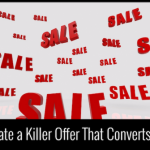
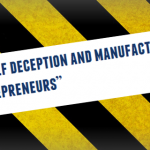




![[GET] The Rules of Copywriting](https://seo.maxiaodong.com/wp-content/plugins/wordpress-23-related-posts-plugin/static/thumbs/6.jpg)
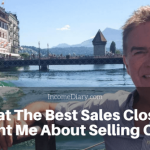
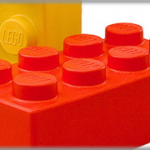



Pingback:Homepage